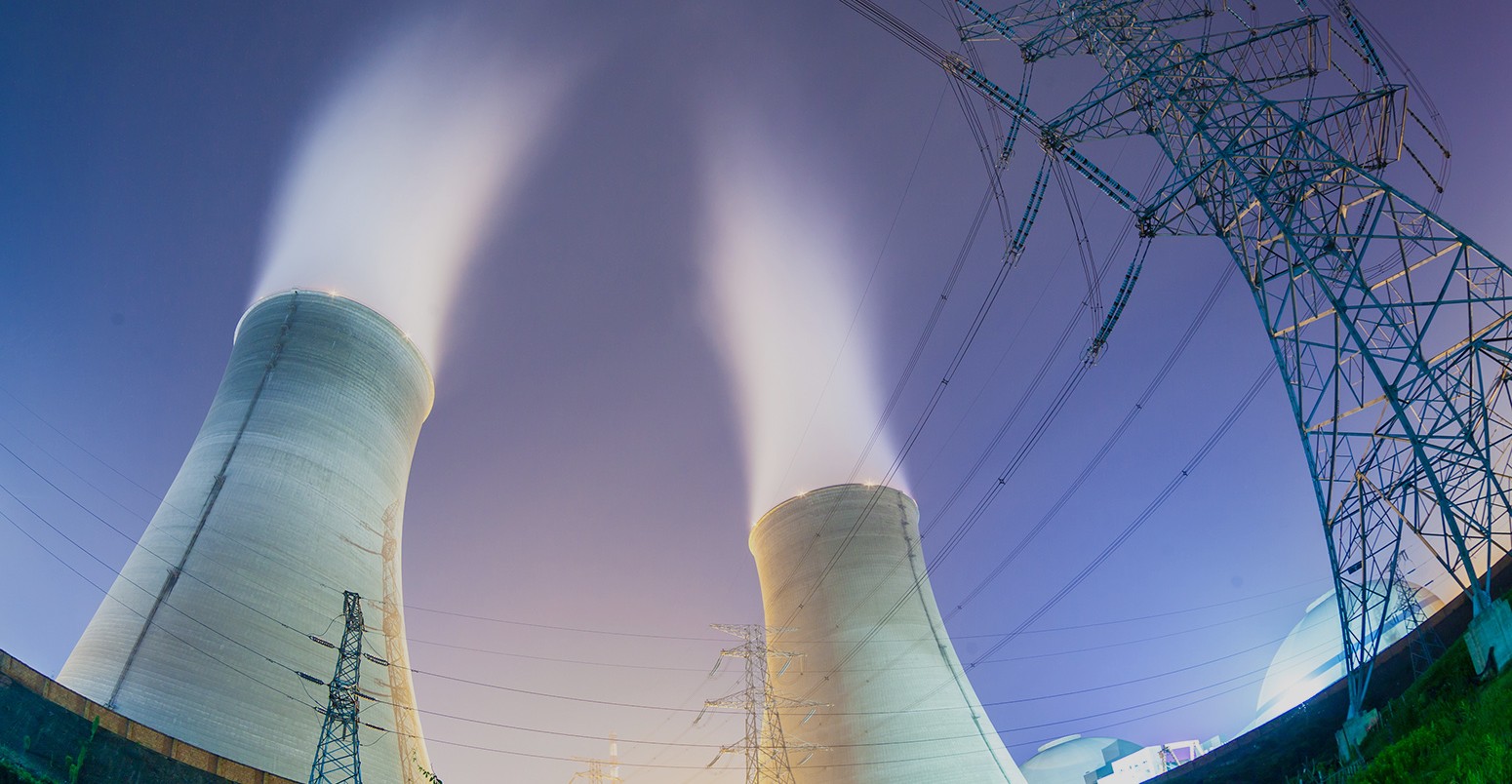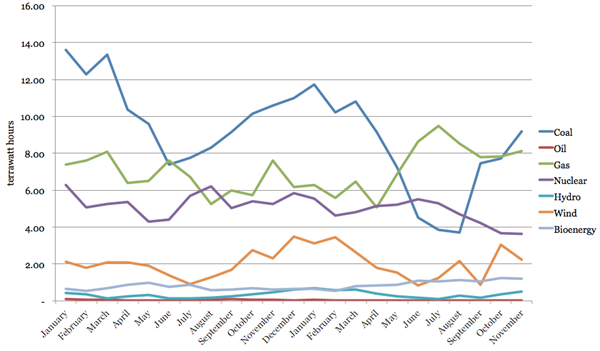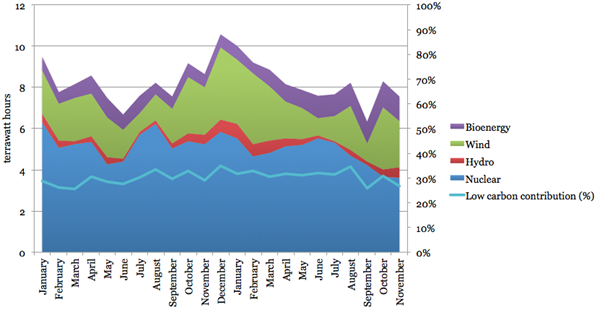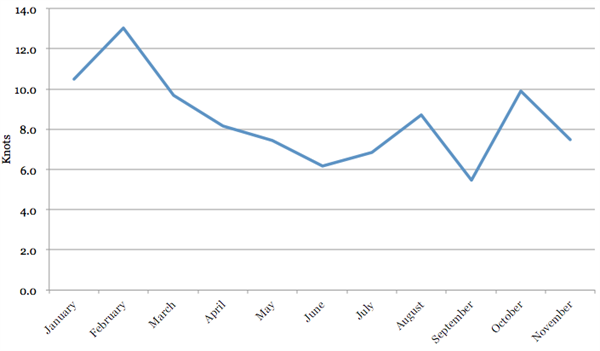
Mat Hope
29.01.2015 | 12:00pmAfter being briefly displaced by gas, coal returned to its place as the UK’s most used fuel for electricity generation towards the end of 2014, new government statistics show.
At the same time, low-carbon electricity generation fell slightly as two nuclear power reactors were unexpectedly taken offline and wind speeds slowed.
The data shows the UK’s continued reliance on the most carbon-intensive fuel source for its power, and the energy system’s sensitivity to international fuel-price volatility.
Carbon Brief goes through the Department of Energy and Climate Change’s latest energy trends statistics, which provides data up to the end of November 2014.
Coal use increases
Gas was the most used fuel for electricity generation during the third quarter of 2014, bucking a long-term trend. But, in November, coal generation overtook gas generation for the first time in five months.

Source: DECC energy trends, UK electricity supply
The main reason for the switch was that gas prices rose significantly, as coal prices fell. Throughout last summer, gas was relatively cheap, but the price spiked in September:

Source: Energy Solutions, UK wholesale gas prices
The data shows how that UK’s electricity generation mix remains sensitive to volatile international fossil fuel prices. As Carbon Brief showed after DECC’s last statistical release, that can have a significant effect on the UK’s emissions.
Low-carbon generation falls
In further bad news for the UK’s emissions, electricity supplied by low-carbon sources fell at the end of the year due to two nuclear reactors being taken offline and low wind speeds.
Nuclear, wind, hydro and biomass power plants accounted for 26 per cent of the UK’s electricity supply in November 2014, down from a 12-month high of 35 per cent in December 2013, and three per cent less than November 2013.

Source: DECC energy trends, low-carbon electricity supply
Unexpected faults in the casings of two nuclear reactors meant 2.3 gigawatts of nuclear power capacity was taken offline in August.
An increase in wind-power generation due to high wind speeds covered the shortfall to an extent in October. But wind speeds decreased in November, causing low-carbon generation’s share to fall. Low wind speeds in September had a similar effect on low-carbon electricity generation.

Source: DECC energy trends, wind speeds
The UK’s emissions will have been tempered slightly by a slight decrease in demand throughout the year. In November, once the figures have been adjusted for variable temperatures, consumption decreased by 0.5 per cent compared to October. Consumption fell six per cent compared to a year before.
So DECC’s latest data shows the UK is becoming gradually more energy efficient, but continues to rely on coal, the most polluting energy source, to provide the largest share of its electricity.
It also shows that the UK’s diverse mix of renewables means low-carbon sources can account for more than a quarter of the UK’s electricity supply even when there are major unexpected nuclear outages. Nonetheless, renewables’ overall contribution unsurprisingly largely remains dependent on how windy it is.
Main image: Upward view of the cooling towers and high voltage power transmission tower at night.
Updated 29/01: The low carbon share graph was updated.
-
Coal returns as most-used fuel for electricity generation, new government statistics show

